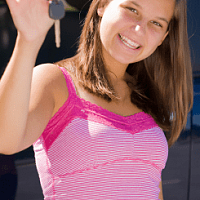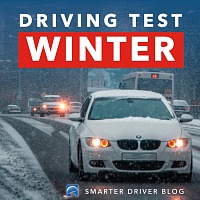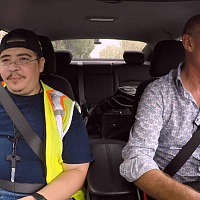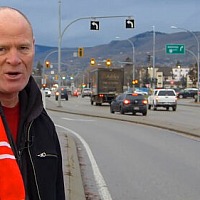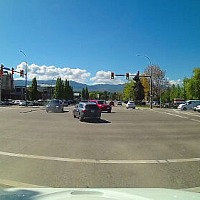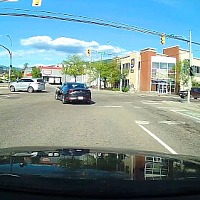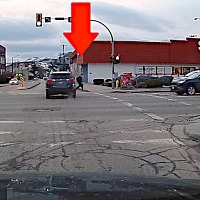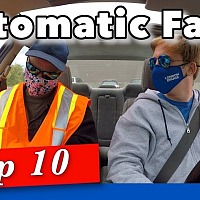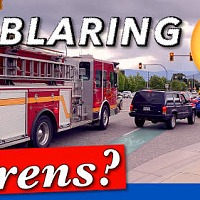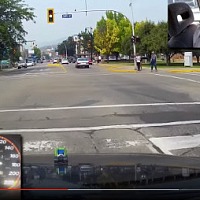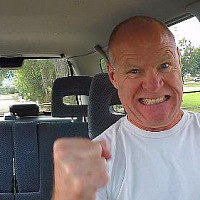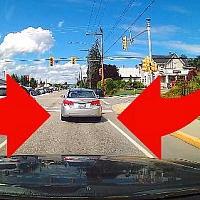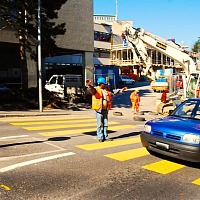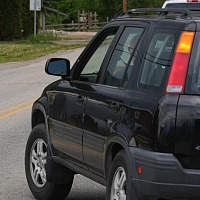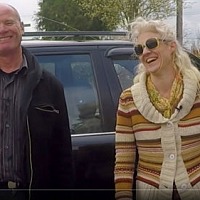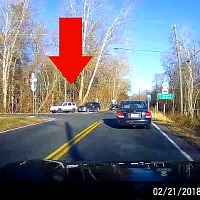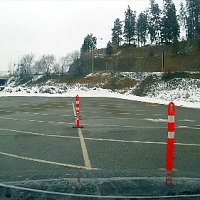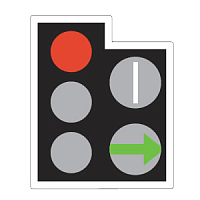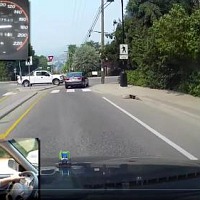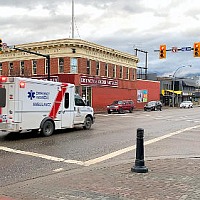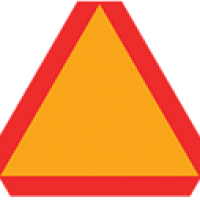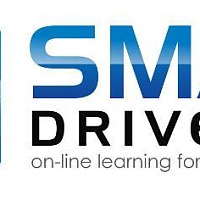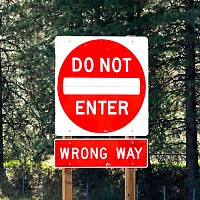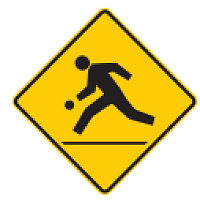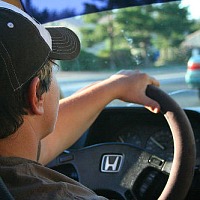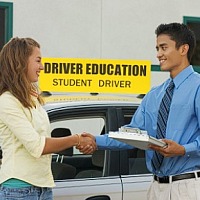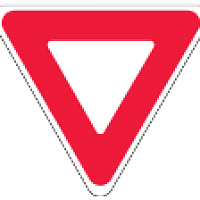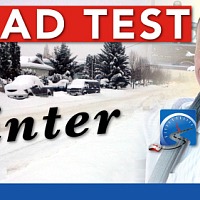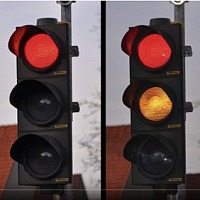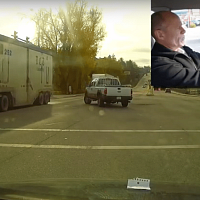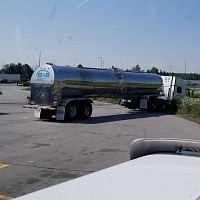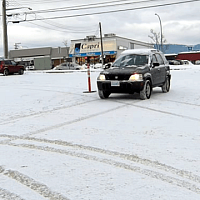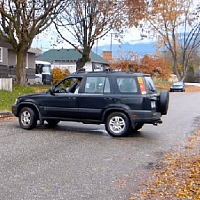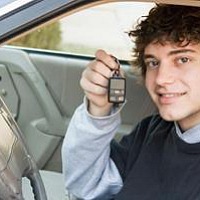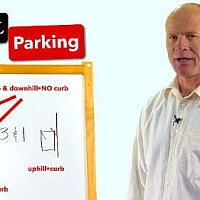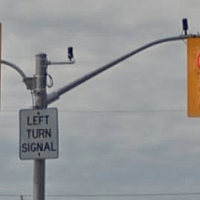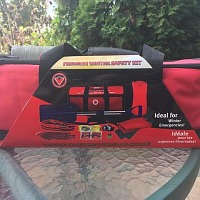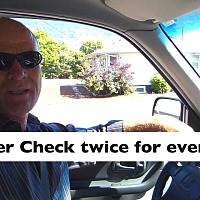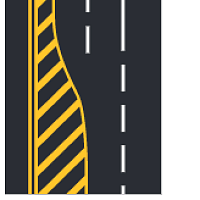You must come to a complete stop at STOP signed intersections to pass your driver's test.
How to Stop Completely at STOP Signs | Pass a ROAD TEST Smart
Closed Caption
Introduction
Hi there smart drivers, Rick with Smart Drive Test.
Another quick tip for Road Test Smart.
I had a comment from ChelZemi.
He wanted to know how long he had to wait at a STOP signed intersection after he came to stop.
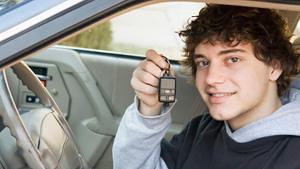
LEARN THE SECRETS THAT DRIVING SCHOOLS DON'T TELL YOU!
• FEAR :: Know that you WON'T have to face friends & family and tell them you didn't pass;
• SELF-CONFIDENCE :: Get the exact skills from a licensed driving instructor that will guarantee your success;
• CONFUSION :: Cut through the conflicting driving procedures information;
• QUALIFIED :: Smart Drive Test has helped 1000s pass their driver's test...and we can help you!
Stopping Completely has NOTHING to do with time
I told him that there isn't an amount of time that you need to wait-- at any period of time--he simply had to bring the vehicle to a complete stop.
Unlike most of the vehicles behind me, that you can see here, they don't come to a complete stop - the wheels never stop turning.
So how do you know that you're at a complete stop? Any vehicle is comprised of two main parts:
1) the body and
2) the chassis.

The chassis is comprised of the wheels, the axles, & the suspension.
And what happens is that the body is attached to the chassis via the suspension.
How to Know When Your Vehicle is Stopped
When you brake the vehicle, the body actually moves forward of the chassis.
And just before you come to a complete stop, you need to release the brake, just before the vehicle comes to a complete stop and allow the body to settle back on the chassis.
And then reapply the brake and come to a complete stop.
When the body actually kind of moves backwards--you kind of feel it in the vehicle--that's when you know the vehicle has come to a complete stop.
Correct Stopping Postion at STOP signed intersection
So when you come to a complete stop at the correct position at the STOP signed intersection:
1) before the stop line;
2) before the sidewalk;
3) or where the two roads meet.
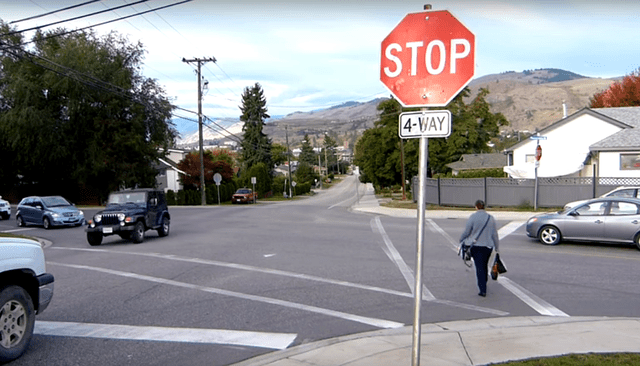
And I'll put a card up here for you for the complete video on stopping positions at STOP signed intersections.
2-Way STOP Signed & 4-Way STOP signed intersections are different
So you bring the vehicle to a complete stop at the correct stopping position, and if you can't see the cross traffic, or can't see the intersection, then you need to creep forward, treat the intersections as a yield and give the right-of-way to other road users in the intersections: pedestrian, cyclists, people on scooters and whatnot.
Give the right-of-way and then once the way is clear, you can proceed after you have stopped.
Now behind me here you can see there's a four-way stop, and again I'll put a video up here for you for right-of-way at four-way stops.
Because it's a little bit different: first person or if you're in doubt, the vehicle on the right.
After you stop, treat the intersection as a YIELD
But it's a little more complicated than that and the video will explain that so check that video out as well.
Question for my smart drivers: how do you know that your vehicle has come to a complete stop?
And this is going to help out the people who are going for a road test because on a road test at controlled intersections you must bring the vehicle to a complete stop.
Conclusion
Leave a comment down in the comment section there.
All that helps out all the new drivers endeavoring to get their license.
I'm Rick with Smart Drive Test - thanks very much for watching.
If you like what you see here share, subscribe, leave a comment down in the comment section.
As well, hit that thumbs up button.
If you're working towards getting your license, check out the videos below.
Lots of great information there - lots of other videos on the channel that will help you be successful in that endeavor.
If you're on a mobile device, check out the cards in the upper right-hand corner here.
Those too will give you links to all the videos on the channel.
As well, links to my website - practice driving test questions and online driving courses - check that out as well.
Thanks again for watching, good luck on your road test!
And remember, pick the best answer not necessarily the right answer.
Have a great day.
Bye now.



